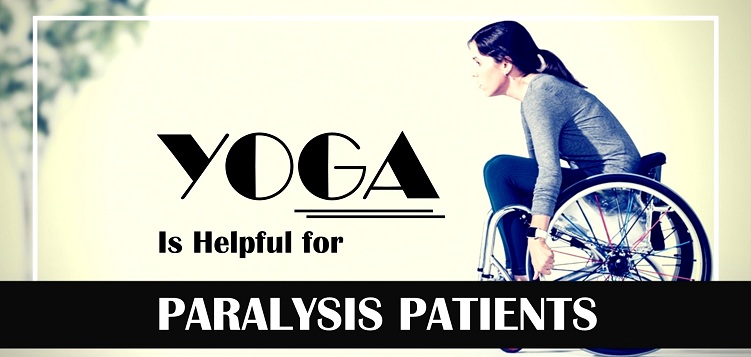Fight with Paralysis through Yoga
Yoga in itself is beneficial for the whole body. In relation to that paralysis is a specific kind of dysfunction that results in the inability of the movement of the one or more muscles which eventually results into the loss of feelings of that person in any particular area. By that condition, the body parts those were affected were unable to move. In that context yoga is such a practice that brings cure or restraining conditioning for any kind of chronic diseases.
Thus it also contains the paralysis yoga which encompasses the yoga for paralysis patients. While going deep into it the paralysis condition can be categorized into partial, complete or temporary and based on the condition the patients are prescribed with the paralysis exercise. This will help in strengthening the paralyzed part of the body and help in regenerating the damaged nerve of that area or of the whole body.
Thus the yoga for paralysis provides various asanas by which the patients can be able to gain the muscle coordination. In addition carrying out yoga facilitates the stretching of the body which has positive effects on the muscular system including the spine as well as bones. The tension created due to the inactivity of the muscles or the damage of nerve will be healed by yoga and functions of the body improvise.
With the strengthening of the muscles, there has been effective movement within the affected muscles. The reason behind it is the stretching. With proper stretching the damaged nerves, as well as the affected muscles, get the proficient supply of the blood, nutrients and oxygen. The proficient supply of these nutrients, blood, and oxygen helps in building up the nerve signals.
As a result, the lost connection in between the brain and the affected body parts get retained. With this, the patient basically carries out normal movements. Thus the paralysis is such a disease that can be very noticed by the factor of immobility. In any condition there raises the condition where the movement gets affected it can be known as the paralysis. Other than that the rest symptoms of paralysis are:
- Vision Problems.
- Behavioural issues.
- Difficulty in swallowing or speaking.
- Balance Problems.
- Abnormal heart rate and sweating.
- Feeling of numbness.
- Muscle Spasms.
In addition to that the paralysis is found to be of four types, i.e, monoplegia, hemiplegia, paraplegia and paraplegia. Thus the paralysis can be treated through many allopathic methods and the medical science came up with advancements in various mobility aids to make the patients feel active. But the treatment of paralysis can also be effectively carried out by yoga.
Paralysis is therefore caused by severe health issues caused by the atherosclerosis, hypertension, diabetes and hemorrhage. Other than that this can also be caused by the cerebral palsy, trauma, tumors, multiple sclerosis and many more. Thus people can be able to take precautions for paralysis by dealing with pleurisy in time. In that context there have been some yoga poses which will help the patients in fighting the patients with paralysis.
Parvatasana:
This pose is considered to be the mountain pose that helps the paralysis patient to help them to get stabilized. It also helps them to have normal breathing. It is carried out by being in padmasana. The individual can get lifted up from padmasana by lifting the hips and thighs keeping the body on knees. Later after few seconds they can come back to relax position.
Siddhasana:
It is one of the effective poses that help the position of meditation. As it is one of the powerful poses of meditation so it is used in treating paralysis because it helps in the rise of kundalini residing in the human body in the mystical circle.
Mandukasana:
The name itself indicates the posture of this pose to be of like frog sitting in its hindlegs. It can be carried by sitting in vajrasana with the upturned feet.
Ardhamatsyendrasana:
It is one of the vital positions that stimulate the vital organs like stomach, kidney, spleen, liver and the intestine. It also helps in stretching and pulling of back muscles and is recommended for the patients of slipped disc, lumbago and rheumatism.



I want to learn paralyize yoga plzz help me contact me pi9967414682plzz or what’s app
Need to learn yoga for stroke paralysis
Need to learn yoga for stroke paralysis